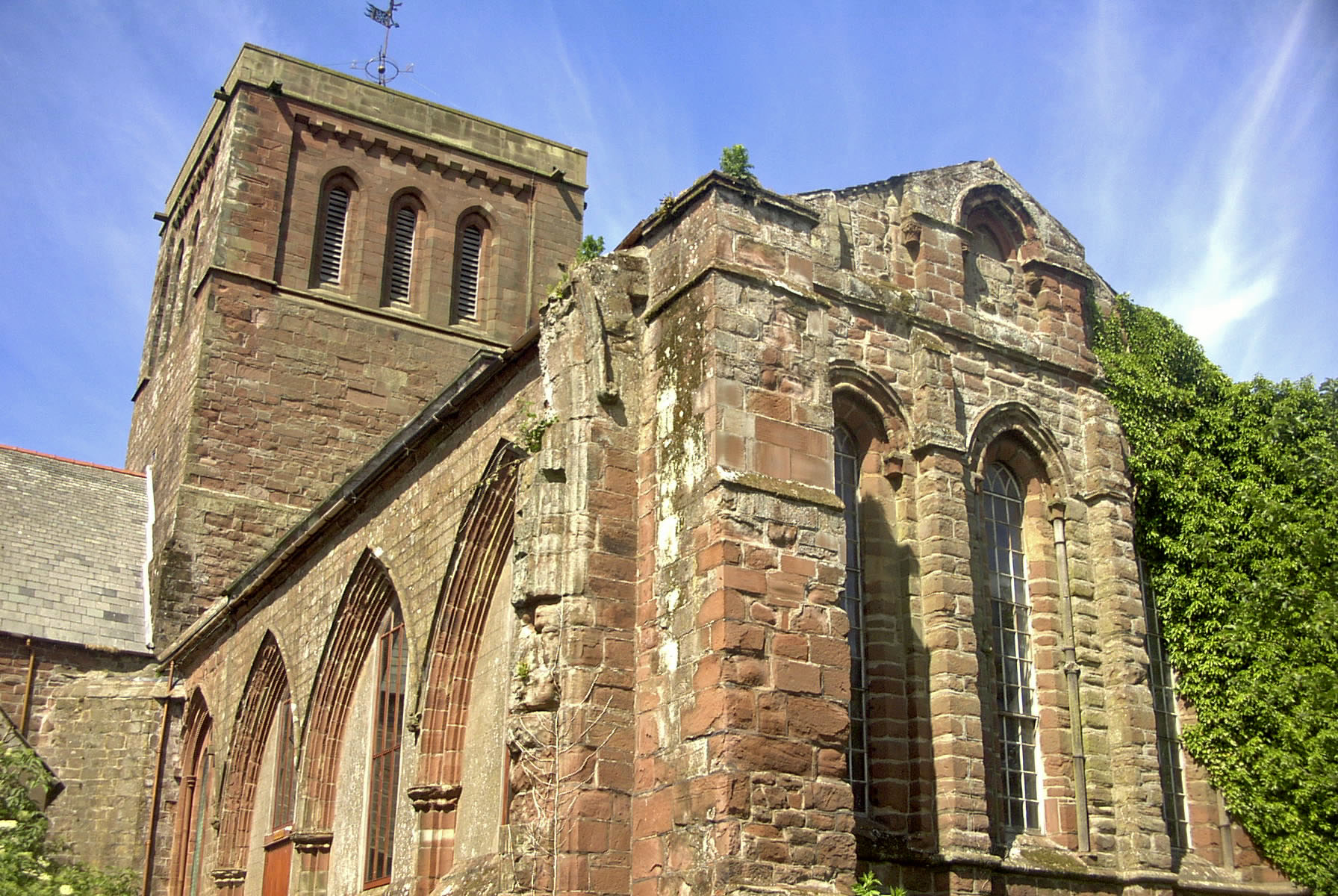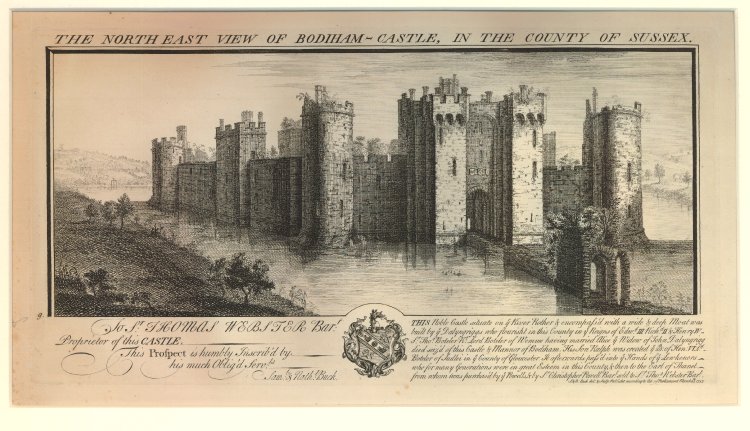|
Priory Of St Bees
St Bees Priory is the parish church of St Bees, Cumbria, in England. There is evidence of a pre-Normans, Norman religious site, on which a Benedictine priory was founded by the first Norman Lord of Egremont William Meschin. It was dedicated by Archbishop Thurstan of York,Wilson, Rev J, The Registers of St Bees Priory, The Surtees Society 1915. sometime between 1120 and 1135. Sculptural and charter evidence suggests the site was a principal centre of religious influence in the west of the county, and an extensive parish developed, with detached portions covering much of the Western Lakes.See John M. TodThe pre-Conquest Church in St Bees, Cumbria/ref> The priory was dissolved in 1539. Since then, the buildings have served as the Anglican church of St Bees parish, and are now Grade I listed building, listed buildings. Pre-Norman church There is sculptural and place-name evidence for the existence of a pre-Norman religious site, although no buildings still remain from that time. T ... [...More Info...] [...Related Items...] OR: [Wikipedia] [Google] [Baidu] |
Benedictine
The Benedictines, officially the Order of Saint Benedict (, abbreviated as O.S.B. or OSB), are a mainly contemplative monastic order of the Catholic Church for men and for women who follow the Rule of Saint Benedict. Initiated in 529, they are the oldest of all the religious orders in the Latin Church. The male religious are also sometimes called the Black Monks, especially in English speaking countries, after the colour of their habits, although some, like the Olivetans, wear white. They were founded by Benedict of Nursia, a 6th-century Italian monk who laid the foundations of Benedictine monasticism through the formulation of his Rule. Benedict's sister, Scholastica, possibly his twin, also became a religious from an early age, but chose to live as a hermit. They retained a close relationship until her death. Despite being called an order, the Benedictines do not operate under a single hierarchy. They are instead organized as a collection of autonomous monasteries ... [...More Info...] [...Related Items...] OR: [Wikipedia] [Google] [Baidu] |
Corney
Corney is a village and former civil parish, now in the parish of Waberthwaite, in the Cumberland district, in the ceremonial county of Cumbria, England. It is in the west of the Lake District, near the A595 road, and it is located north east of Bootle and is 10 miles north of Millom. The name is well known to travellers who take the fell road from Duddon Bridge to Ravenglass, as this route is known as the "Corney Fell Road". It is possible to see the Isle of Man, North Wales and parts of Scotland from Corney on a clear day. In 1931 the parish had a population of 185. On 1 April 1934 the parish was abolished and merged with Waberthwaite. Corney has a predominantly agricultural community. Corney is also close to the ruins of Seaton Hall, a 12th-century Benedictine nunnery (no public access). St John's Church dates back to as early as the 12th century and you can see Scafell Pike from the churchyard. Corney, coincidentally, is almost exactly located at the South West Corner ... [...More Info...] [...Related Items...] OR: [Wikipedia] [Google] [Baidu] |
Victorian Restoration
The Victorian restoration was the widespread and extensive wikt:refurbish, refurbishment and rebuilding of Church of England church (building), churches and cathedrals that took place in England and Wales during the 19th-century Victorian era, reign of Queen Victoria. It was not the same process as is understood today by the term building restoration. Against a background of poorly maintained church buildings, a reaction against the Puritan ethic manifested in the Gothic Revival, and a shortage of churches where they were needed in cities, the Cambridge Camden Society and the Oxford Movement advocated a return to a more medieval attitude to churchgoing. The change was embraced by the Church of England which saw it as a means of reversing the decline in church attendance. The principle was to "restore" a church to how it might have looked during the Decorated style of architecture which existed between 1260 and 1360, and many famous architects such as George Gilbert Scott and Ewan ... [...More Info...] [...Related Items...] OR: [Wikipedia] [Google] [Baidu] |
St Bees Theological College
St Bees Theological College, close to the coast of Cumberland, was the first independent theological college to be established for the training of Church of England ordinands. It was founded in 1816 by George Henry Law, Bishop of Chester, in what was during those years the northern extremity of his diocese. For many subsequent years the vicar of St Bees was effectively both the principal of the college and also its proprietor. The college drew students both from England and from Wales. It catered particularly for those prospective ordinands for whom the cost of a traditional university degree course would have been prohibitive. They attended lectures and had their library within the rebuilt chancel of St Bees Priory, whilst living in lodgings throughout the parish.Nicholas Groves, Theological Colleges: their hoods and histories, published by the Burgon Society, 2004, pages 18-19, Over 2,600 clergy are believed to have trained at the college during the course of its history. L ... [...More Info...] [...Related Items...] OR: [Wikipedia] [Google] [Baidu] |
Bishop Of Chester
The Bishop of Chester is the Ordinary of the Church of England Diocese of Chester in the Province of York. The diocese extends across most of the historic county boundaries of Cheshire, including the Wirral Peninsula and has its see in the City of Chester where the seat is located at the Cathedral Church of Christ and the Blessed Virgin Mary, which was formerly the Benedictine Abbey of Saint Werburgh, being elevated to cathedral status in 1541. The Bishop's residence is Bishop's House, Chester. Cheshire previously held a bishopric from 1075 when the seat was at the collegiate church of St John the Baptist until 1102. The present diocese was formed in 1541 under King Henry VIII. Mark Tanner's election as Bishop of Chester was confirmed on 15 July 2020.The Confirmation of Election of Mark Simon Austin Tanner as Bishop of Chester'. The Cathedral and Metropolitical Church of St Peter in York, 15 July 2020. Earliest times Chester at various periods in its history had a ... [...More Info...] [...Related Items...] OR: [Wikipedia] [Google] [Baidu] |
George Henry Law
George Henry Law (12 September 1761 – 22 September 1845) was the Bishop of Chester (1812) and then, from 1824, Bishop of Bath and Wells. Born at the lodge of Peterhouse, Cambridge, of which his father Edmund Law (who later became Bishop of Carlisle) was Master, Law was educated at Charterhouse School and at Queens' College, Cambridge, where he was second wrangler (University of Cambridge), wrangler. His main claim to fame was the way in which he introduced a systematic and rigorous training system for parish priests. He founded a theological college at St Bees in Cumbria. There had been once been a monastery at St Bees, but since the dissolution in 1539 many of the monastic buildings had disappeared and chancel stood roofless when Bishop Law visited Whitehaven in 1816. He was short of good clergy for the diocese, which included Lancashire, and was at that time the powerhouse of the industrial revolution. The consequent growth in population increased the demand for clerg ... [...More Info...] [...Related Items...] OR: [Wikipedia] [Google] [Baidu] |
St Bees Man
St Bees Man was the name given to the extremely well preserved body of a medieval man discovered in the grounds of St Bees Priory, Cumbria, in 1981. His identity was subsequently established with a high degree of probability as Anthony de Lucy, 3rd Baron Lucy, who died in 1368, probably killed on crusade at New Kaunas, in what is now Lithuania. Discovery The late 12th-century monastic chancel, showing the ruined east end of the chancel aisle on the left. St Bees Man was discovered during an archaeological dig by the University of Leicester on the site of St Bees Priory. The 1981 dig examined two areas of the ruined chancel aisle at the west end of the priory. The aisle was built in about 1300 in the Decorated style, and is thought to have fallen into ruin before the Dissolution of the priory in 1539 due to structural failure caused by poor foundations. The body was found buried in a wooden coffin, wrapped in lead sheet. Despite the lead sheet being damaged at the foot end, t ... [...More Info...] [...Related Items...] OR: [Wikipedia] [Google] [Baidu] |
William De Lancaster I
William is a masculine given name of Germanic origin. It became popular in England after the Norman conquest in 1066,All Things William"Meaning & Origin of the Name"/ref> and remained so throughout the Middle Ages and into the modern era. It is sometimes abbreviated "Wm." Shortened familiar versions in English include Will or Wil, Wills, Willy, Willie, Bill, Billie, and Billy. A common Irish form is Liam. Scottish diminutives include Wull, Willie or Wullie (as in Oor Wullie). Female forms include Willa, Willemina, Wilma and Wilhelmina. Etymology William is related to the German given name ''Wilhelm''. Both ultimately descend from Proto-Germanic ''*Wiljahelmaz'', with a direct cognate also in the Old Norse name ''Vilhjalmr'' and a West Germanic borrowing into Medieval Latin ''Willelmus''. The Proto-Germanic name is a compound of *''wiljô'' "will, wish, desire" and *''helmaz'' "helm, helmet".Hanks, Hardcastle and Hodges, ''Oxford Dictionary of First Names'', Oxford Univer ... [...More Info...] [...Related Items...] OR: [Wikipedia] [Google] [Baidu] |
Chapter House
A chapter house or chapterhouse is a building or room that is part of a cathedral, monastery or collegiate church in which meetings are held. When attached to a cathedral, the cathedral chapter meets there. In monasteries, the whole community often met there daily for readings and to hear the abbot or senior monks talk. When attached to a collegiate church, the dean (religion), dean, prebendary, prebendaries and canon (priest), canons of the college meet there. The rooms may also be used for other meetings of various sorts; in medieval times monarchs on tour in their territory would often take them over for their meetings and audiences. Synods, ecclesiastical courts and similar meetings often took place in chapter houses. Design When part of a monastery, the chapter house is generally located on the eastern wing of the cloister, which is next to the church. Since many cathedrals in England were originally monastic foundations, this is a common arrangement there also. Else ... [...More Info...] [...Related Items...] OR: [Wikipedia] [Google] [Baidu] |
Samuel And Nathaniel Buck
Samuel Buck (1696 – 17 August 1779) and his brother Nathaniel Buck (died 1759/1774) were English engraving, engravers and printmaking, printmakers, best known for their ''Buck's Antiquities'', depictions of ancient castles and monasteries. Samuel produced much work on his own but when the brothers worked together, they were usually known as the Buck Brothers. More is known about Samuel than Nathaniel. Careers Samuel Buck was born in Yorkshire in 1696. After publishing some prints in that county he moved to London. With Nathaniel he embarked on making a number of series of prints of "antiquities", which consisted of ancient castles and former religious buildings in England and Wales. Starting in 1724, they travelled around these countries, and completed sets of prints for the regions of England by 1738 and for Wales between 1739 and 1742. These are commonly known as ''Buck's Antiquities''. During this time they also worked on a series of Cityscape, townscapes in ... [...More Info...] [...Related Items...] OR: [Wikipedia] [Google] [Baidu] |




